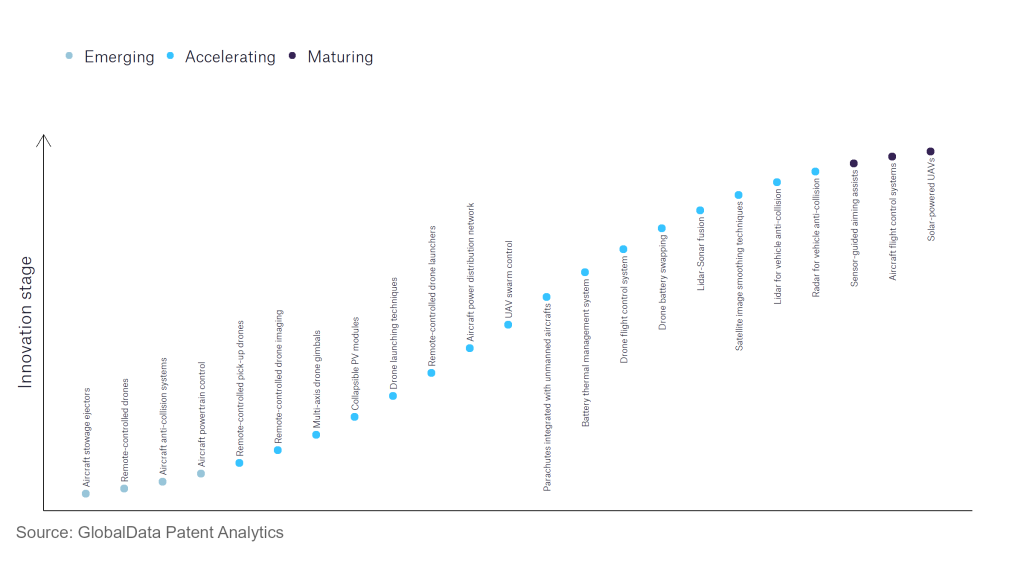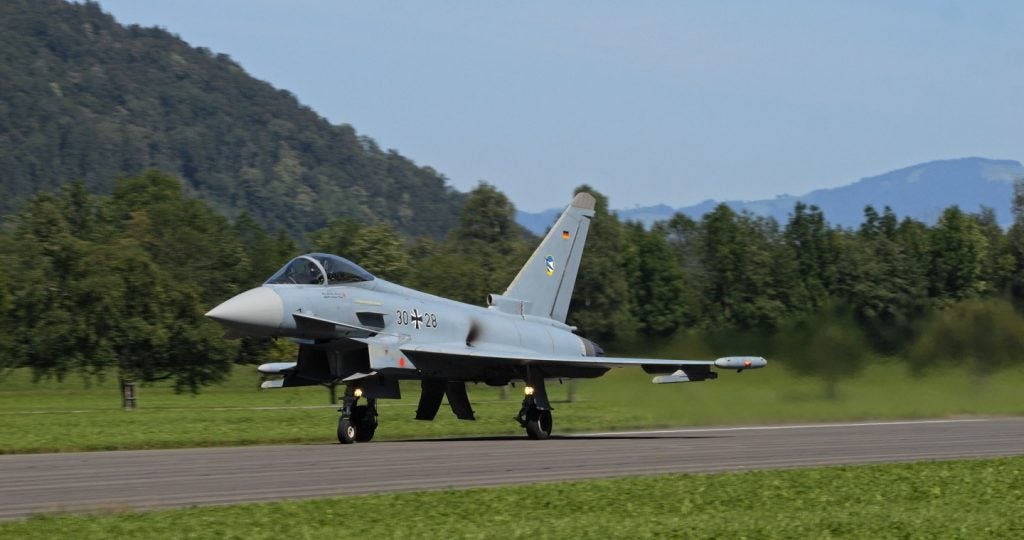The aerospace and defence industry continues to be a hotbed of innovation, with activity driven by the pressing need for modernisation and the growing importance of emerging technologies such as artificial intelligence and unmanned systems. In the last three years alone, there have been over 174,000 patents filed and granted in the aerospace and defence industry, according to GlobalData’s report on Internet of Things in Aerospace, Defence & Security: Aircraft anti-collision systems. Buy the report here.
However, not all innovations are equal and nor do they follow a constant upward trend. Instead, their evolution takes the form of an S-shaped curve that reflects their typical lifecycle from early emergence to accelerating adoption, before finally stabilising and reaching maturity.
Identifying where a particular innovation is on this journey, especially those that are in the emerging and accelerating stages, is essential for understanding their current level of adoption and the likely future trajectory and impact they will have.
180+ innovations will shape the aerospace and defence industry
According to GlobalData’s Technology Foresights, which plots the S-curve for the aerospace and defence industry using innovation intensity models built on over 262,000 patents, there are 180+ innovation areas that will shape the future of the industry.
Within the emerging innovation stage, aircraft powertrain controls, remote controlled drones, and aircraft anti-collision systems are disruptive technologies that are in the early stages of application and should be tracked closely. UAV swarm control, lidar for vehicle anti-collision, and satellite image smoothing techniques are some of the accelerating innovation areas, where adoption has been steadily increasing.
Innovation S-curve for Internet of Things in the aerospace and defence industry

GlobalData’s analysis also uncovers the companies at the forefront of each innovation area and assesses the potential reach and impact of their patenting activity across different applications and geographies. According to GlobalData, there are 10+ companies, spanning technology vendors, established aerospace and defence companies, and up-and-coming start-ups engaged in the development and application of aircraft anti-collision systems.
Key players in aircraft anti-collision systems – a disruptive innovation in the aerospace and defence industry
‘Application diversity’ measures the number of different applications identified for each relevant patent and broadly splits companies into either ‘niche’ or ‘diversified’ innovators.
‘Geographic reach’ refers to the number of different countries each relevant patent is registered in and reflects the breadth of geographic application intended, ranging from ‘global’ to ‘local’.
Patent volumes related to aircraft anti-collision systems
| Company | Total patents (2021 - 2023) | Premium intelligence on the world's largest companies |
| General Dynamics | 20 | Unlock Company Profile |
| SZ DJI Technology | 17 | Unlock Company Profile |
| Amazon.com | 16 | Unlock Company Profile |
| Boeing | 15 | Unlock Company Profile |
| Israel Aerospace Industries | 8 | Unlock Company Profile |
| Honeywell International | 8 | Unlock Company Profile |
| Airbus | 8 | Unlock Company Profile |
| Saab | 8 | Unlock Company Profile |
| Nippon Telegraph and Telephone | 7 | Unlock Company Profile |
| SPACE DATA | 7 | Unlock Company Profile |
| Everseen | 6 | Unlock Company Profile |
| Thales | 6 | Unlock Company Profile |
| Intel | 6 | Unlock Company Profile |
| Seamatica Aerospace | 5 | Unlock Company Profile |
| Cape Productions | 5 | Unlock Company Profile |
Source: GlobalData Patent Analytics
General Dynamics is one of the leading patent filers in aircraft anti-collision systems. Gulfstream Aerospace, a General Dynamics subsidiary, recently submitted a patent for methods and systems relating aircraft anti-collision using a three-dimensional visual indication of an aircraft wingtip path. Some other key patent filers in the aerospace and defence industry include Boeing, Israel Aerospace Industries, Airbus, Saab, Thales and Seamatica Aerospace.
In terms of application diversity, Thales leads the pack. Israel Aerospace Industries and Airbus stood in the second and third positions respectively. By means of geographic reach, Boeing held the top position followed by Israel Aerospace Industries and General Dynamics.
Aircraft anti-collision systems are becoming increasingly advanced, providing enhanced safety for pilots and passengers. Numerous leading defence primes are filing patents aimed at further progressing the capabilities of anti-collision mechanisms on board aircraft.
To further understand how Internet of Things is disrupting the aerospace and defence industry, access GlobalData’s latest thematic research report on Thematic Research - Internet of Military Things.
Data Insights
From

The gold standard of business intelligence.
Blending expert knowledge with cutting-edge technology, GlobalData’s unrivalled proprietary data will enable you to decode what’s happening in your market. You can make better informed decisions and gain a future-proof advantage over your competitors.






